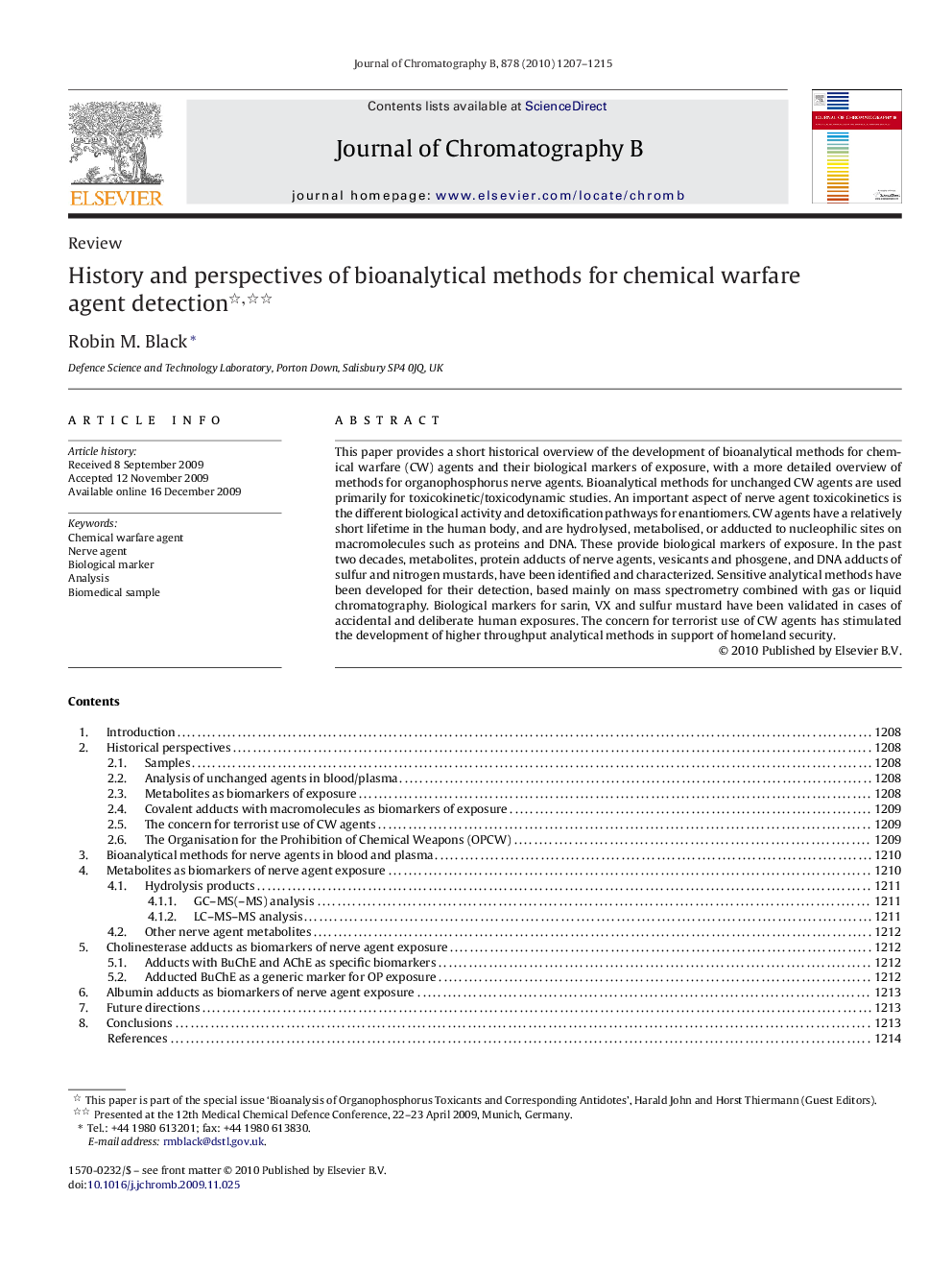| کد مقاله | کد نشریه | سال انتشار | مقاله انگلیسی | نسخه تمام متن |
|---|---|---|---|---|
| 1215044 | 1494151 | 2010 | 9 صفحه PDF | دانلود رایگان |

This paper provides a short historical overview of the development of bioanalytical methods for chemical warfare (CW) agents and their biological markers of exposure, with a more detailed overview of methods for organophosphorus nerve agents. Bioanalytical methods for unchanged CW agents are used primarily for toxicokinetic/toxicodynamic studies. An important aspect of nerve agent toxicokinetics is the different biological activity and detoxification pathways for enantiomers. CW agents have a relatively short lifetime in the human body, and are hydrolysed, metabolised, or adducted to nucleophilic sites on macromolecules such as proteins and DNA. These provide biological markers of exposure. In the past two decades, metabolites, protein adducts of nerve agents, vesicants and phosgene, and DNA adducts of sulfur and nitrogen mustards, have been identified and characterized. Sensitive analytical methods have been developed for their detection, based mainly on mass spectrometry combined with gas or liquid chromatography. Biological markers for sarin, VX and sulfur mustard have been validated in cases of accidental and deliberate human exposures. The concern for terrorist use of CW agents has stimulated the development of higher throughput analytical methods in support of homeland security.
Journal: Journal of Chromatography B - Volume 878, Issues 17–18, 15 May 2010, Pages 1207–1215